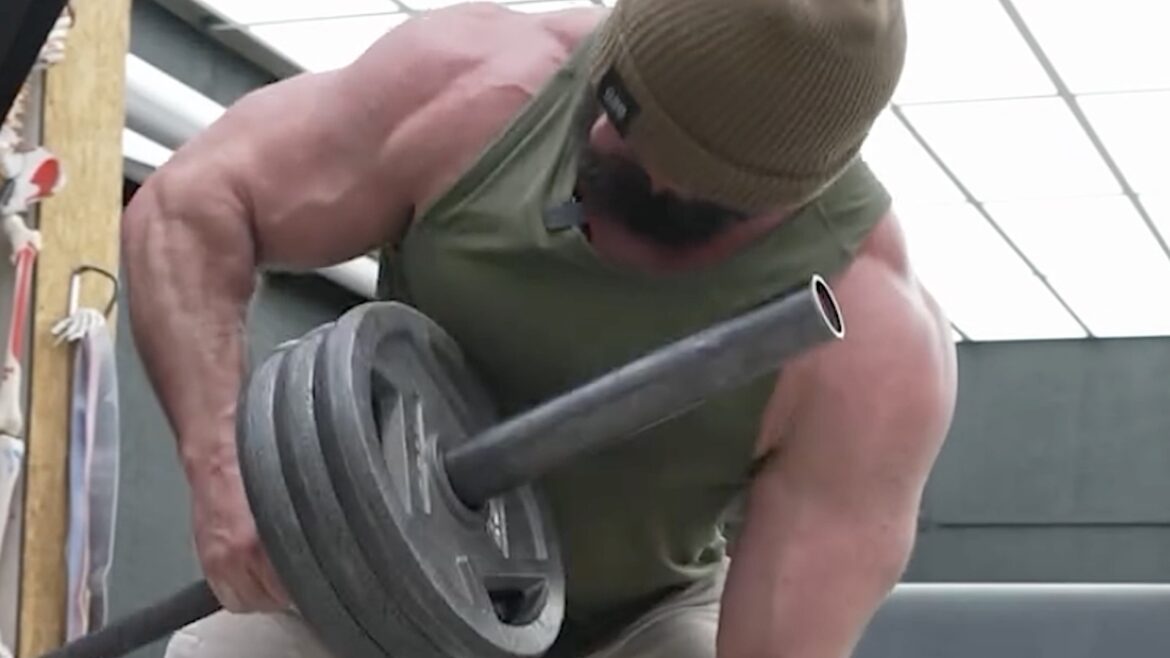Is a push-pull routine the secret to better posture?
There’s no shortage of posture correction tutorials, but which methods work? Content creator Ryan Humiston states, “Stretching is the least important”.
In April 2025, Humiston challenged conventional mobility and posture correction advice, explaining that strategic resistance training, rather than flexibility techniques, is the trick to proper body alignment.
You look like Quasimodo because of neural tone and tightened stiffness.
—Ryan Humiston
Neural tone refers to the baseline resistance of resting muscles to passive movement, which can stiffen muscles over time. Poor daily posture, push-pull imbalances (i.e., pressing more than pulling), contribute to weakened posture. Research found that stretching and yoga may help improve postural malalignments. (1)
How to Improve Posture
- Anterior/posterior balance
- Bias pec minor in training
- Extend pressing range
- Use a foam pad for a deeper pec stretch
- Prioritize high rows and shrugs
- Overload the upper back
[Related: The 12 Best Mobility Exercises, PT-Approved]
Why Stretching is Overrated for Mobility
While stretching benefits range of motion, it does little to address the muscular imbalances contributing to poor posture. Proprioceptive neuromuscular facilitation (PNR) stretching, which combines passive stretching and isometric muscle tension, can help improve posture, but it’s a lengthy process. (2) Research points to muscle strengthening as more effective for postural improvements.
Strengthening the Right Muscles
Humiston proposed a strategy for strengthening antagonist muscles around the scapula, critiquing his past programming blunder:
I realized I was hitting my lats with several different exercises and only had one major upper back movement.
—Ryan Humiston
In one study, bodybuilders had only 1-1.2% stronger mid traps than a control group, hardly sufficient to counterbalance anterior dominant training. (3)
Three Steps for Better Posture
- Pec Minor Emphasis
- A weak pec minor (smaller, deeper chest muscles that stabilize the shoulder blades) prevents posterior scapular tilt, leading to less subacromial space for the rotator cuff muscles, while causing internal rotation, which is bad for the shoulders.
- Exercises that bias the pectoralis minor are crucial. Dumbbell flyes with external rotation stretch the pec minor, effectively mimicking the doorway stretch — a great pec minor stretcher. High-to-low cable flyes more effectively target the pec minor.
- Increased Pressing Range
- Lying on a foam pad during pressing exercises enhances scapular retraction for a deeper pec minor stretch and greater mobility, even for beginners.
- Use a full range of motion. Bring the bar to your chest instead of stopping short.
- Dumbbells offer a greater stretch.
- Overload the Upper Back
- Start back workouts with high rows, superset with shrugs to strengthen the rhomboids and traps.
- Gradually increase the weights, sets, and reps.
In my opinion, the only way to fix [dysfunctional posture] is progressive overload.
—Ryan Humiston
Humiston feels face pulls are inadequate despite their proposed postural benefits.
Humiston recommends four sets of six reps (12 total) for rows and shrugs. Mobility and posture aren’t rooted in yoga or stretching techniques. Instead, “It’s fixing the way you train.”
More Training Content
References
- Kim D, Cho M, Park Y, Yang Y. Effect of an exercise program for posture correction on musculoskeletal pain. J Phys Ther Sci. 2015 Jun;27(6):1791-4. doi: 10.1589/jpts.27.1791. Epub 2015 Jun 30. PMID: 26180322; PMCID: PMC4499985.
- Hindle KB, Whitcomb TJ, Briggs WO, Hong J. Proprioceptive Neuromuscular Facilitation (PNF): Its Mechanisms and Effects on Range of Motion and Muscular Function. J Hum Kinet. 2012 Mar;31:105-13. doi: 10.2478/v10078-012-0011-y. Epub 2012 Apr 3. PMID: 23487249; PMCID: PMC3588663.
- Barlow JC, Benjamin BW, Birt P, Hughes CJ. Shoulder strength and range-of-motion characteristics in bodybuilders. J Strength Cond Res. 2002 Aug;16(3):367-72. PMID: 12173950.
Featured image:
